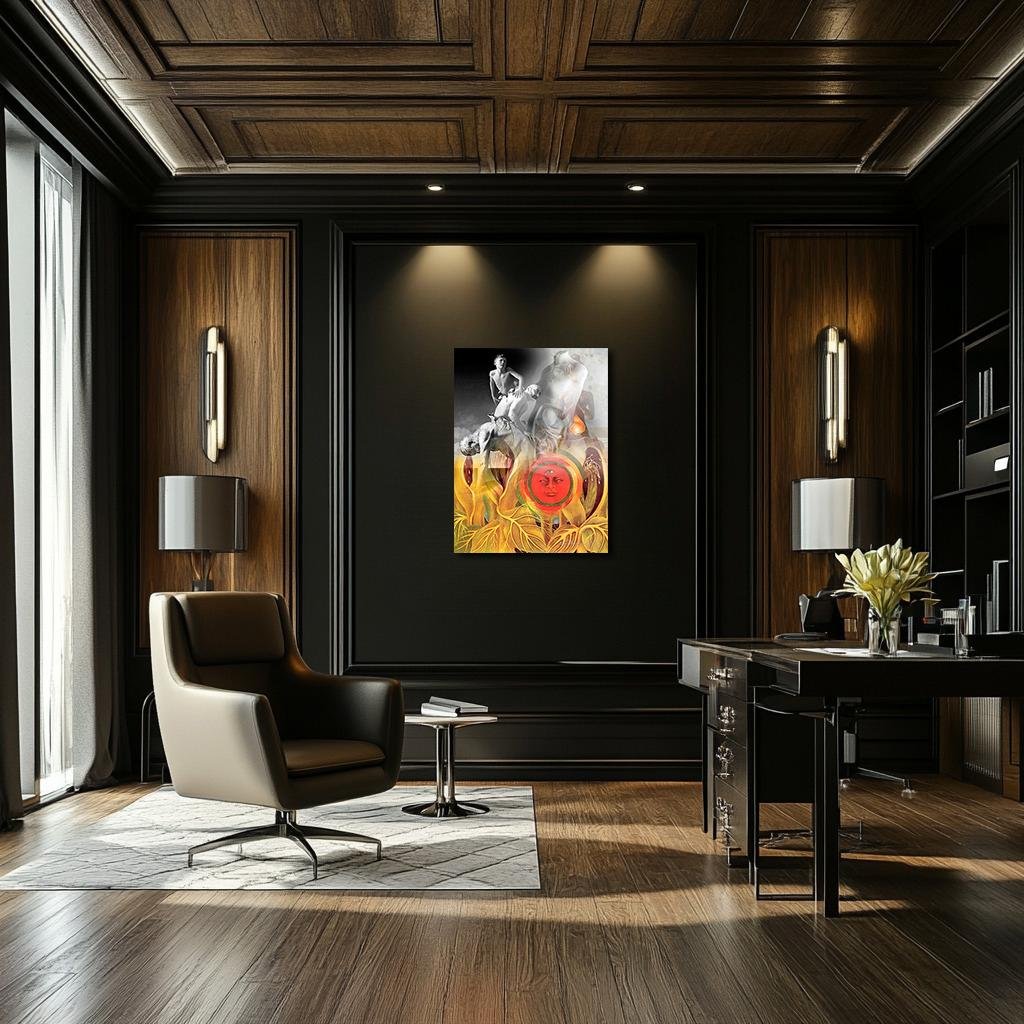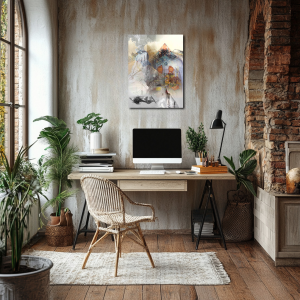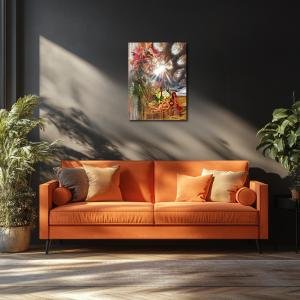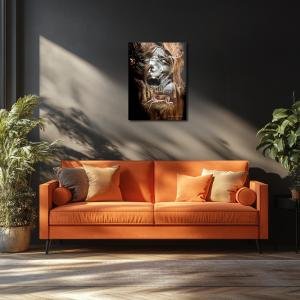The Womb of Becoming: Frida’s Solar Pulse of Creation
The Womb of Becoming reimagines Frida Kahlo’s The Sun and Life as a mythic anatomy of creation, where golden roots, fetal forms, and cosmic torsos spiral from a red sun with a third eye. Through radiant saffron, scarlet, grayscale flesh, and spectral pastels, this piece weaves fertility, struggle, and spiritual rebirth into a single cosmic diagram. It is not merely about nature—it is nature thinking itself through body and root, with Frida as the pulse between becoming and return.
Please see Below for Details…
Hotline Order:
Mon - Fri: 07AM - 06PM
404-872-4663
This conceptual reimagining of Frida Kahlo’s The Sun and Life extends her original vision of organic interdependence into a layered meditation on birth, regeneration, and the eternal cycle of becoming. Titled The Womb of Becoming, the piece merges evolutionary myth with spiritual anatomy, turning the body into a vessel of both seed and star, and the sun into the throbbing mind of all genesis. What Kahlo began as a quiet tribute to fertility and the divine order of nature here becomes an expansive, visceral odyssey through growth, struggle, and return.
At the center of the lower half, Kahlo’s radiant red sun blazes into focus, its third eye opened, framed in a mandorla of yellow leaves and golden tendrils that twist upward like arteries and roots combined. The face within the sun glows with a knowing serenity—not as a celestial observer, but as the core intelligence behind all living systems. The sun is no longer merely symbolic; it is the heartbeat of transformation, a pulsing axis around which evolution turns.
From the base of the sun, stalks and stems stretch skyward in shades of ochre and sulfur, golden yellow and mustard green. Each root and leaf is more than botanical—they are shaped like muscular limbs, gesturing fingers, veins, and wombs, blurring the line between plant and person. Life does not grow from the earth—it emerges through it, like memory through skin.
Above this fertile rootscape, emerging from both shadow and mist, a series of human forms unravel in varied states of development. On the left, stark in grayscale, a youthful figure climbs the body of a hunched, older form, echoing themes of inheritance, burden, and ascent. Their bodies are not smooth—they are textured like clay, aged like marble, fragmented like memory. The grayscale aesthetic introduces a sense of distance, echoing both past lives and ancestral echoes, suspended in ritual struggle.
To the right, translucent silhouettes of gestation emerge. A womb opens gently to reveal a fetus curled in embryonic repose, surrounded by spectral diagrams of umbilical cords and spinal curves. Another figure kneels in luminous meditation, her lower abdomen glowing with firelight—the solar center reborn within the body. These forms glow in muted coral and bone-white, set against a background of pearl mist and cracked light.
The uppermost section slips into surreal celestial abstraction. The heavens are rendered in gradations of soft gray, almost white, fading toward infinity. The division between sky and flesh, between body and root, is dissolved. From above, droplets of shadow fall like seeds—or souls—rejoining the fertile earth below.
The color palette of The Womb of Becoming is richly symbolic and deeply emotional. The lower fields bloom with goldenrod, turmeric, saffron, and the warm yellows of pollen and sun-soaked leaves—tones associated with growth, energy, and divine warmth. These earthbound colors pulse with life, yet are edged with rust and burnt orange, signaling decay, transition, and compost—the raw alchemy of regeneration.
The central sun radiates in a bold, saturated red—tinged with volcanic orange and maroon. This is not a passive sun—it is the wound of creation, the mouth of energy, the open eye of the source. Its third eye, painted in soft blood hues, suggests that life is not random, but guided by a sacred intelligence—mystic, maternal, unflinching.
The grayscale torsos on the left introduce a somber contrast, anchoring the image in mortality and the harshness of incarnation. Their absence of color does not mean absence of life; it marks the passage of time, the heaviness of flesh, the ancestors carried in our muscles.
The upper right dissolves into glowing pastels—lavender mist, peach light, faint rose, and bone-white fog. These colors bring softness to the otherwise fiery and muscular composition, allowing for reflection and pause. They represent the etheric state of soul before form and after transformation—the womb before the womb, and the silence that follows birth.
When I created The Womb of Becoming, I wanted to honor Kahlo’s original synthesis of biology, cosmology, and spiritual myth. Her The Sun and Life was never just a symbolic landscape—it was her response to the unbearable beauty and pain of the body as a channel of continuity. Her experiences of miscarriage, surgery, and deep love for nature imbued her vision of life not as something to possess, but something to pass through. In this reimagining, her red sun becomes the center of a sacred diagram—part anatomical, part divine.
The composition moves in a circular rhythm: from the grounded roots to the rising sun, through the bodily spirals of rebirth, and back into the ether. Life does not move in a line here—it turns in loops, it folds back into itself, it sings in waves.
In this vision, Frida Kahlo is the unseen mother of the universe—her heart the red eye of the sun, her body the field through which we all emerge. She tells us life is not a gift to hoard, but a current to flow through—a dance of flesh, root, and sky.
Add your review
Your email address will not be published. Required fields are marked *
Please login to write review!
Looks like there are no reviews yet.








